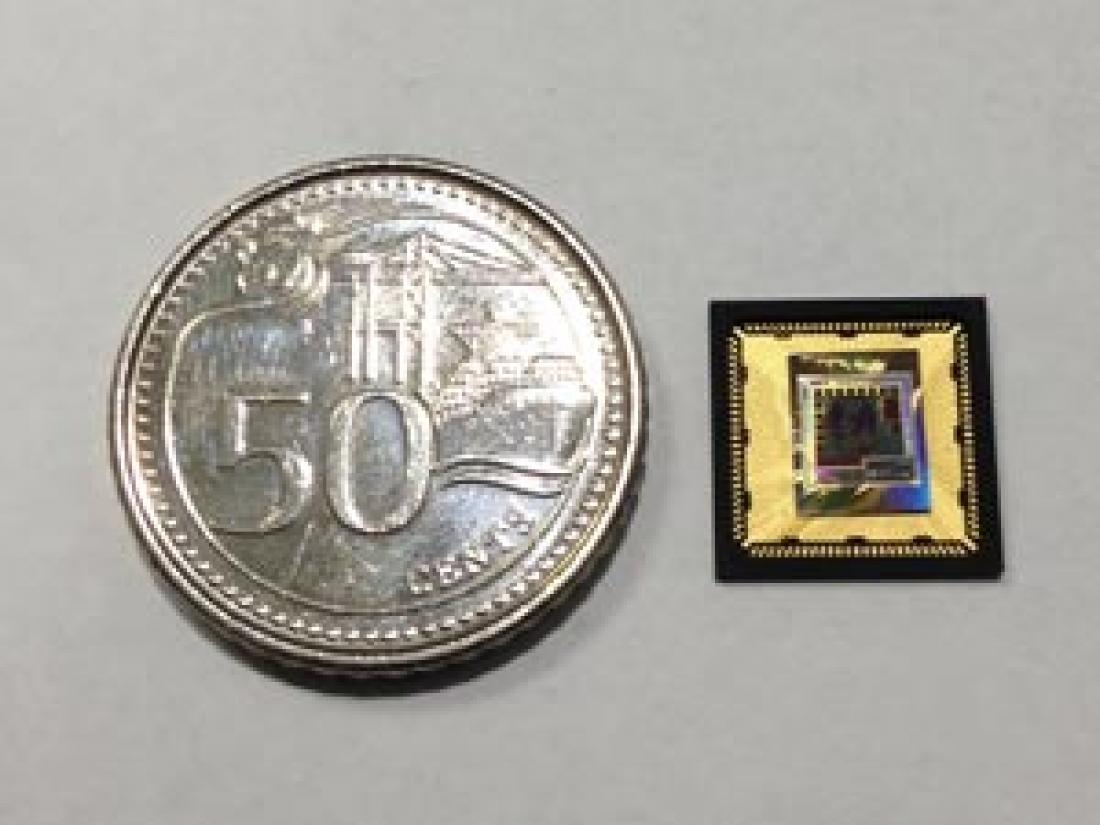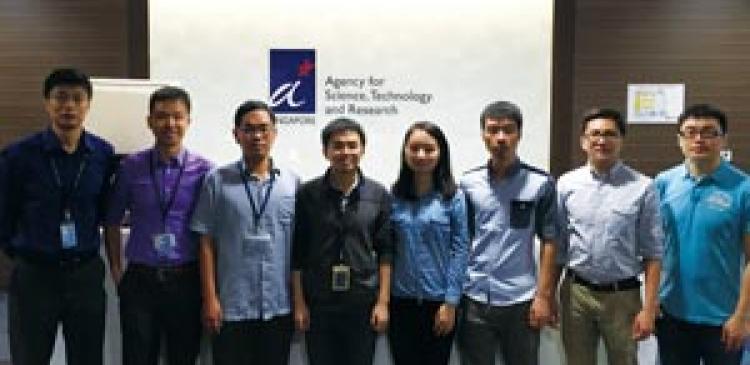A test chip for a sensor node processor based on cognitive sensing technology. A 50-cent coin has been placed next to the chip for size comparison. © 2016 A*STAR Institute of Microelectronics
The Internet of Things (IoT) describes devices and applications that gather and distribute data for everyday life. Sensor devices and processes that will underpin the IoT need to be small, versatile and energy efficient. Now researchers at Agency for Science, Technology and Research (A*STAR) have developed a sensor processor node that is capable of intelligent sensing while using ultra-low levels of power [1].
IoT applications range from biomedical signal processing to uses in vehicle-status monitoring and environmental sensing. Most IoT devices are tiny in size, which means that they typically consume only a small amount of power. This is particularly challenging for processors that sample the information from sensors and analyze the data, as their power demands, in contrast, are intense, explains Xin Liu and Jun Zhou from the research team. “The limits on the space for power sources such as batteries leads to a critical power budget at the level of the micro Watt,” says Liu. “At this level, processor design becomes extremely challenging if we are to achieve ultra-low power consumption whilst maintaining comprehensive functions.”
Typically, the lower the operating voltage, the lower is the overall power consumption. The Institute of Microelectronics research team adopted ultra-low voltage circuitry and system design techniques, and further developed diverse hardware accelerators for high-energy efficient signal processing of sensor information.
A further key advance is possible by taking a more intelligent approach to the signal acquisition, by utilizing the knowledge about the specific sensor signals. In many applications, sensor signals take the form of sudden spikes, which are best-processed using cognitive sampling technologies. The advantage of those techniques is that they reduce the amount of data that needs to be processed by about 40 per cent which greatly reduces the power consumption.
Using such techniques, the researchers were able to develop a sensor node processor design that can operate on ultra-low operating voltages as low as 0.5 volts, and that use only 29 to 39 pico Joule per operation cycle.
The design represents a step toward a more comprehensive set of hardware systems, explains Liu.
“Emerging IoT devices play a key role to support the Singapore Smart Nation initiative in a wide range of applications,” says Liu. “Our research team aims to develop high energy efficiency hardware circuits and systems, to achieve high performance, artificial intelligence, high energy efficiency, and a high security level.”
The A*STAR-affiliated researchers contributing to this research are from the Institute of Microelectronics
Reference
[1] Liu, X., Zhou, J., Wang, C., Chang, K.-H., Luo, J., Lan, J., Liao, L., Lam, Y.-H. et al. An ultralow-voltage sensor node processor with diverse hardware acceleration and cognitive sampling for intelligent sensing. IEEE Transactions on Circuits and Systems II: Express Briefs 62, 1149–1153 (2015).




